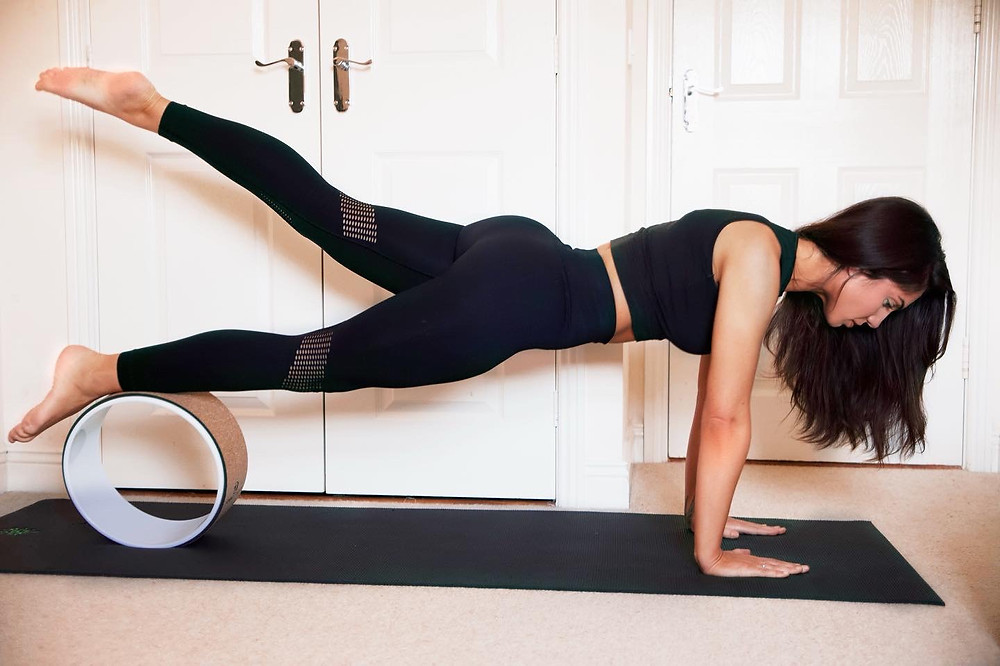Yoga wheels have exploded in popularity over recent years. These circular foam or padded props assist yogis in proper body alignment, stretching and deepening yoga poses. But are yoga wheels truly beneficial or just the latest fad? Let’s examine if yoga wheels are genuinely good for you.
Yoga wheels promise to amplify benefits, reduce strain, and prevent injury when incorporated thoughtfully into yoga routines. However, misuse of wheels and over-reliance on props can hinder progress.
Potential Benefits of Using Yoga Wheels
When utilized correctly, yoga wheels offer the following worthwhile perks:
- Improves spinal extension and thoracic mobility safely. Wheels are excellent backbenders.
- Yoga wheels assist proper alignment in poses. Wheels engage core and reduce rounding or compression.
- Deepens flexibility in hips, shoulders and hamstrings when used to gently “pry open” tight areas.

- Provides cushioned support during challenging poses, reducing strain, which is helpful for beginners.
- It can elevate certain restorative poses to increase comfort and relaxation.
- Variety in props like yoga wheels prevents boredom and plateaus during practice.
- Fun, unique fitness accessories boost motivation and enjoyment of yoga sessions.
The key is harnessing yoga wheels thoughtfully to work in tandem with poses, not allowing full dependency on them.
Potential Drawbacks of Overusing Yoga Wheels
While beneficial in moderation, overusing yoga wheels or relying on them heavily may cause:

- Hindered progress by preventing full range of motion and strength gains.
- Muscle imbalances or overstretching if used excessively to “force” flexibility.
- Joint strain or impingement if improper body alignment persists when using wheels.
- Lack of stability strength since wheels provide artificial support vs. building those skills.
- Inability to perform poses independently which leads to dependency on props.
- Higher risk of injury due to hyperextension or lack of muscle engagement.
The key is using yoga wheel judiciously as an occasional aid, not a crutch. Their advantages dissipate when used improperly.
Tips for Using Yoga Wheel Safely and Effectively
To maximize benefits and avoid pitfalls, utilize these tips when incorporating yoga wheels:

- Only use yoga wheel for appropriate poses, primarily backbends. Avoid poses that hyperextend joints.
- Begin slowly and gently, using wheels minimally. Progress conservatively to avoid overstretching.
- Learn proper anatomy and alignment before using wheels to deepen poses. Master basics first.
- Engage core and leg muscles when lifting hips to prevent excessive pressure on lower back.
- Never “hang” relaxed in poses with the wheel supporting you. Remain actively engaged.
- Use sparingly and alternate with non-prop days to build true flexibility and strength.
- Ensure yoga wheels have textured surfaces for grip and are the optimal size for your body.
Are Yoga Wheels Right for You?
Yoga wheels can enhance your practice when used properly, but aren’t required for everyone. Consider your individual needs:
- If you are a beginner, focus on building a foundation before incorporating props like wheels.
- If dealing with injuries, check with a doctor before using wheels for therapeutic benefits.
- If seeking variety or motivation, wheels can provide a novel new challenge.
- If struggling with limited spinal flexibility, wheels assist progressing backbends.
Conclusion
The bottom line is that yoga wheels offer advantages for some students when integrated carefully. But their benefits diminish sharply if used improperly or as crutches rather than aids. Learn solid fundamentals, progress slowly, and use wheels judiciously only where they truly amplify your practice.


